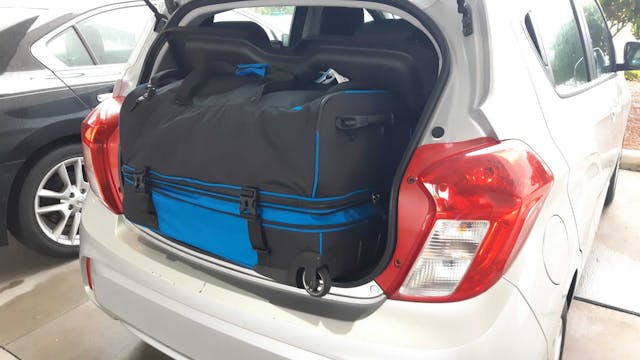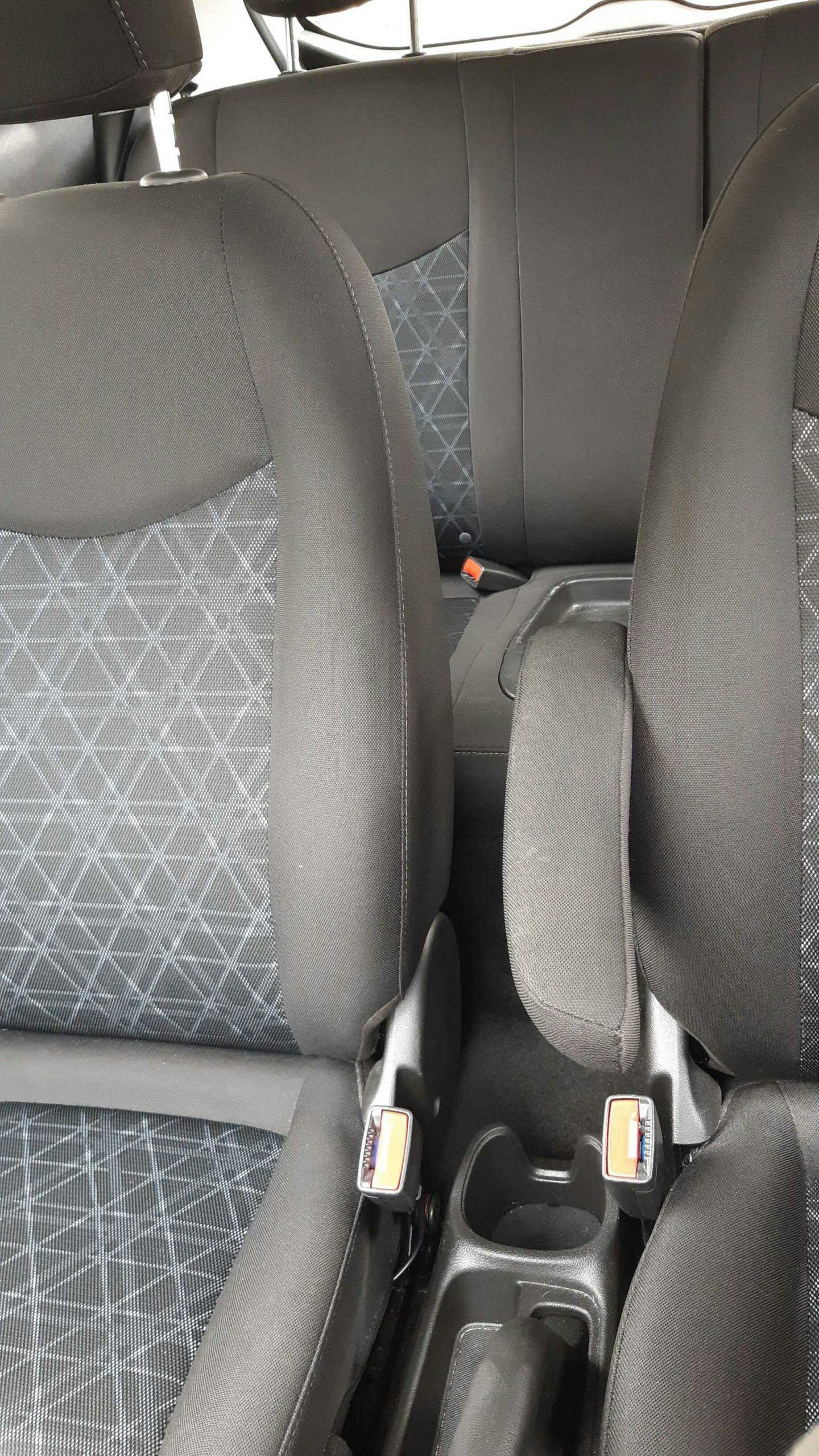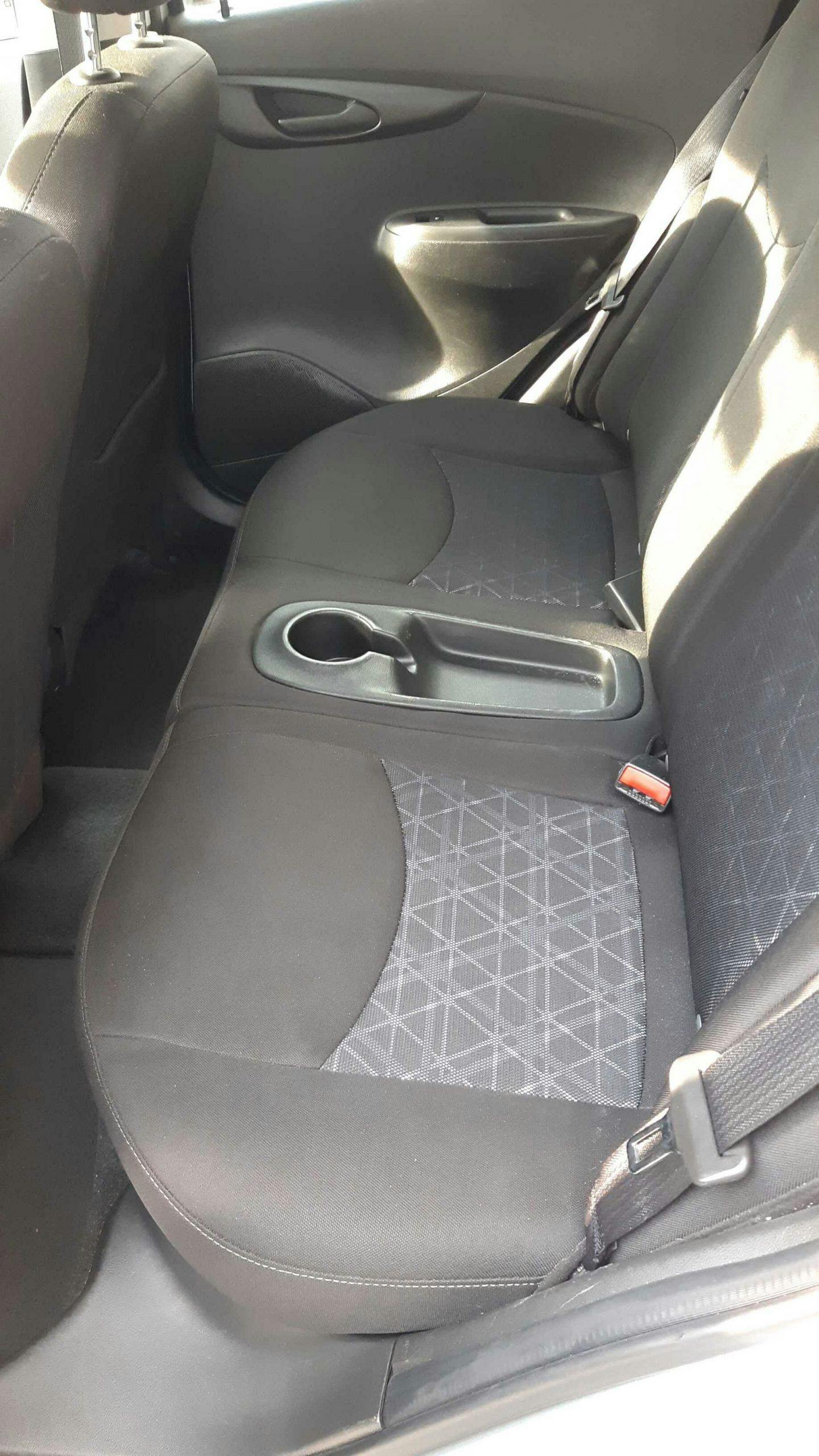Weighing the Spark: Our fighter pilot harnesses hamster power in the land of the jaguars
Apropos of nothing, it makes me happy when a jet in full afterburner sets off a bunch of car alarms.
While stationed in Germany, we took a family spring break road trip to Cinque Terre, in Italy’s mountainous Liguria region. While there we saw ridiculously tiny cars and I told our oldest, then 9, that the small cars were powered by actual hamsters. I didn’t realize she had believed me until she came home upset from her first post-spring break day of school. Turns out, her classmates made fun of her after she told them Italy had hamster-powered cars. The sheer delight I felt upon hearing that is a clear sign I am a terrible father.
Have you ever weighed as much as a car? I’m not talking about a go kart, four-wheeler, or ATV, but an actual street legal automobile. I have; furthermore, well beyond even the most extreme of fad diets, I’ve weighed substantially less than zero pounds.
At my heaviest, I’ve weighed within a couple stone of 2000 pounds, roughly as much as a Smart Fortwo; at my lightest, I’ve been negative 855 pounds. The choice between the two is not a difficult one: I’d pick heavy every day of the week. My personal weight records are courtesy of the maximum and minimum G-forces I’ve experienced in aircraft, +10.2 and -4.5, respectively. Note: I’m speaking of “Gz” or vertical G-forces.
Don’t get me wrong, there’s not much fun about pulling +10.2 G (roller coasters generally max out at about +3.5 G). Under positive G, gravity fights to pull all the blood from your melon and pool it in your gluteals; if successful, you’ll take a nap from which you might not awake before crashing. Sadly, such accidents—called Gravity Induced Loss Of Consciousness, or GLOC—still happen every year, though improved anti-g suits and systems that automatically recover the jet if a ground collision is imminent are thankfully decreasing their frequency. It takes full-body isometric muscle contractions and specialized short, quick breaths to maintain the necessary arterial pressure to keep blood in the brain while under G. Consider as well that while you’re doing all that work to stay awake, you still have to make rapid tactical decisions to either not get shot (if you’re in a defensive position relative to the enemy fighter) or to prosecute the attack (if you’re in an offensive position). Staying awake isn’t a secondary consideration, but it’s also not the primary one.

Most modern fighter jets are rated to pull +9.0 G. The aircraft in which I pulled +10.2 was rated to +9.0 g; I over-G’d the aircraft that day, forcing the maintainers to do extra work to repair the damage (don’t worry, I went and helped and, per time-honored tradition, took some adult beverages as reparation for my buffoonery).
Conversely, fighters are generally only rated to pull a few negative gs. Lest you think me a ham-fist that over/under-Gs aircraft with reckless abandon, I experienced the -4.5G in an Extra Flugzeugbau EA300, a world-class competition aerobatic aircraft rated to +/-10G, or +/-8G when both seats are occupied as was the case when I flew it with a legendary aerobatic pilot. A small aircraft—only a couple Benjamins longer than a Mercedes S650 Pullman and weighing about what I did at +10.2 Gs—it brilliantly executes its mission of maneuvering with extraordinary precision; want to recover from a spin or hammerhead stall pointed on an exact heading? Done. I did learn that Lomcovák (generally spelled Lomcevak in English) is Czechoslovakian for headache. A quick search online for “Extra 300 Lomcevak” videos will demonstrate why that is true.
As mentioned, positive G-forces pull the blood from your brain. Under negative G, blood is forced to your brain and there’s nothing you can do about it (think of hanging upside down from the monkey bars in elementary school, but on steroids). One hundred years ago, people thought flying an outside loop would kill a pilot due to the extreme negative Gs. (An inside loop has your nugget closer to the center of the loop than your rear end, an outside loop is the opposite) In 1927, the legendary Jimmy Doolittle (famous for, among other things, leading the B-25 raid over Tokyo four months after the attack on Pearl Harbor) proved it wasn’t fatal. That said, when he attempted it again two years later the wings literally fell off his airplane and he bailed out.

In the Extra-300, I was determined to complete an outside loop. I leveled off, rolled inverted, then pushed the stick forward. Weightlessness occurs at 0 G, wherein you’re falling ballistically. At -1 G inverted, you’re accelerating away from the earth at the same rate at which you normally fall, meaning, perhaps unintuitively, that -1 G holds an inverted airplane at a constant altitude. All that to say no actual outside looping starts to happen until less than -1 G. 180 degrees of -4.5 Gs later (wherein I achieved my negative 855 pounds) we were upright at the top of the loop. That’s when I chickened out and decided I was happy flying an Immelmann (half loop) and I didn’t need to do a full loop. It was miserable and felt like my eyeballs were popping out of their sockets; indeed, it wasn’t until two days later that my eyes again felt fully seated. Thus my choosing heavy positive Gs over negative Gs.
At just over 6 feet tall and 190 pounds, I’m taller than average but not crazily so. Not wanting to pass out in an airplane and die is solid motivation to work out, so I’m in decent shape. That said, I was previously stationed where there were, and I’ll use the generic term here, special forces units. I felt short when I stood next to 7’1” basketball Hall of Famer David Robinson, but seeing the special forces guys on base or at any of the 5K, 10K, or other fitness runs around town—and, naturally, they were always shirtless—made me feel like I was a sixth grader hanging around high school football players. My powerlifting next door neighbor seems to be about as big around as he is tall and is unquestionably muscular. Not long after moving in I went outside to investigate the strange, repeated rumble of cars crashing, turned out he was just deadlifting and dropping 700 pounds in his garage gym. The special forces guys are certainly swole, but whereas my neighbor lumbers about, they move like a jaguar: lean, lithe, and lethal and they know it.

I’m currently on a work trip back to that same area and can confirm the jaguars are still out in force. While on work trips, per regulation, I book the absolute cheapest rental car. At the counter, the rental car attendant handed over the keys and told me which spot held my ride, but neither did she say what the car was nor did I ask/look at the keys for the make/model. Walking through the lot, I could see the spot that supposedly held my car, but I couldn’t see a car. I arrived to find I had a 2020 Chevy Spark LT; it’s not even 12’ long and was thus hidden by the surrounding cars. The things I have to do for my country. Filled with a strange combination of chagrin and mirth, I decided it looked as though it could be hamster-powered; in truth, it asymptotically approaches triple-digit horsepower. As I left the airport, I floored it and not much happened. I then spent the drive to my hotel mentally dumping all over the car: underpowered, trunk wouldn’t hold my suitcase, it’s so narrow that there’s literally only a single armrest between the front seats, the headrests for the front seats are at such an extreme (immutable) forward angle that my back above the T8 vertebra doesn’t touch the seat, and I’m not even sure my teenagers would fit in the tiny rear seat (our 2016 Miata is 11 inches longer than the Spark and has half the seats).
Then I remembered my friend Brian. He owns a massive Ram 3500 diesel dually and uses it to haul his giant fifth-wheel RV/toy hauler. The toy hauler section is filled with dirt bikes, Rzr, and all manner of off-roading toys. A few years back, the commute to his new job was nearly 40 miles each way. Making the drive in the truck for a couple months, he noted he was spending a metric ton on gas and putting unnecessary wear and tear on it as well. Crunching the numbers, he realized he could buy (finance) a brand new Chevy Spark and drive it to work for less monthly than he was spending on diesel. His local dealer had a Spark on one of those specials they use to lure you in to then buy something nicer, except he didn’t want anything nicer. He wanted the bright green, manual transmission, and the car-is-so-narrow-they-only-have-two-seatbelts-in-the-rear-seat car in the ad. He called it the booger and didn’t care what anyone thought. It easily carried him, his wife, and their two young kids and he loved the ~40 mpg gas mileage. In any case, with what he was saving on gas versus driving the truck he correctly viewed it as a free car.
Brian’s an exceptionally smart guy with a PhD in Electrical Engineering, so I decided to try and see the Spark through his eyes.
Context: Fighter pilots have practiced man-spacing long before COVID, e.g., only sitting every other seat in an auditorium. Female fighter pilots are much more mature than us males and sit wherever they want.
Pro: My hotel’s parking spots are exceptionally narrow, and the Spark’s 63-inch width allows it to fit nicely (our Miata is 68 inches wide).
Con: My wife wasn’t with me and sitting that close to other fighter pilots is frowned upon.

Context: Old-school Laser Guided Bombs (LGBs) used what is called “bang bang guidance,” wherein the canards that steered the bomb were either neutral or fully deflected—no middle ground.
Pro: Per the trip computer I’ve averaged 32.2 mpg for the 250 miles I’ve driven the car.
Con: I’ve used “bang bang” driving with the Spark—either flooring the gas pedal or coasting—as the 98 horsepower engine doesn’t allow for nuanced driving. Brian saw closer to the listed 41 mpg, but his commute was all freeway with minimal stop and go or in-town driving, as was my commute this week. By contrast, over the 58,800 miles I’ve driven my 2016 Mazda 6, it’s averaged 29.3 mpg and it’s slightly bigger than the Spark.
Context: Pilots have to wear/carry a lot of gear; some is the same every mission (harness, helmet, g-suit, gloves, various checklists and publications), while other gear is mission dependent (cold water anti-exposure suit, survival vest, etc.)
Pro: My flight gear fit in the car with me.
Con: The other three pilots in my formation and their flight gear did not.

Context: Aircraft designers spend a lot of time on the Pilot-Vehicle Interface (PVI), ensuring that pilots can intuitively navigate through displays to utilize the aircraft’s various systems. It’s problematic to spend brain bytes in a warzone trying to employ a sensor or weapon due to a crappy PVI.
Pro: My phone connected to the car.
Con: One part of the screen regularly showed my phone was connected, but the screen’s audio section read, “No Phone Connected” and refused to play anything from my phone; half of my drives were spent just playing my music or podcasts through my phone and not the car’s speakers.
Context: Not every aircraft I’ve flown has been a joy to fly. With some, it’s hard to wipe the stupid grin off my face. With others, I can’t say much good about them other than they safely got me from point A to B.
Pro: It was a great week of flying with minimal negative Gs and lots of stupid grins.
Con: None.
Notwithstanding how our respective Sparks treated us, neither Brian nor I held on to them any longer than we needed to. After about two years, Brian moved and changed jobs. His new commute substantially shorter, he quickly flicked off the booger to a college student. My work trip is nearly done, and I’ll happily toss the keys back to the rental car agent, depart the land of the jaguars, and return to the sound of car crashes emanating from the garage next door.
Hamster-powered or not, it made for a fine rental. That said, don’t think any of the above kept me from pretending to drop a large bomb on it for training.
For more of fighter-pilot Josh Arakes’ stories, click here.




